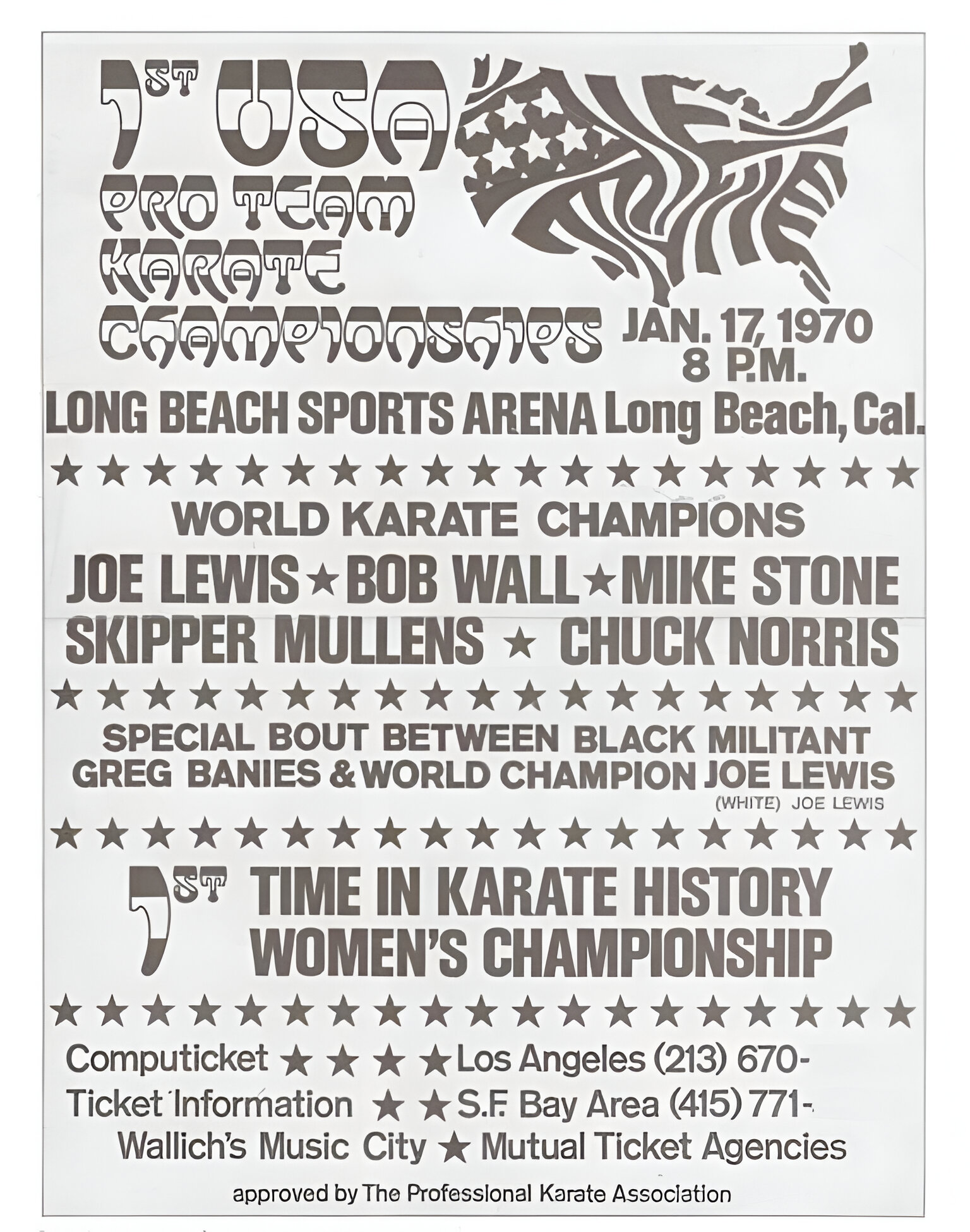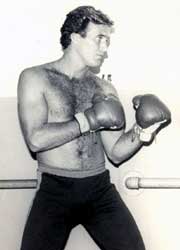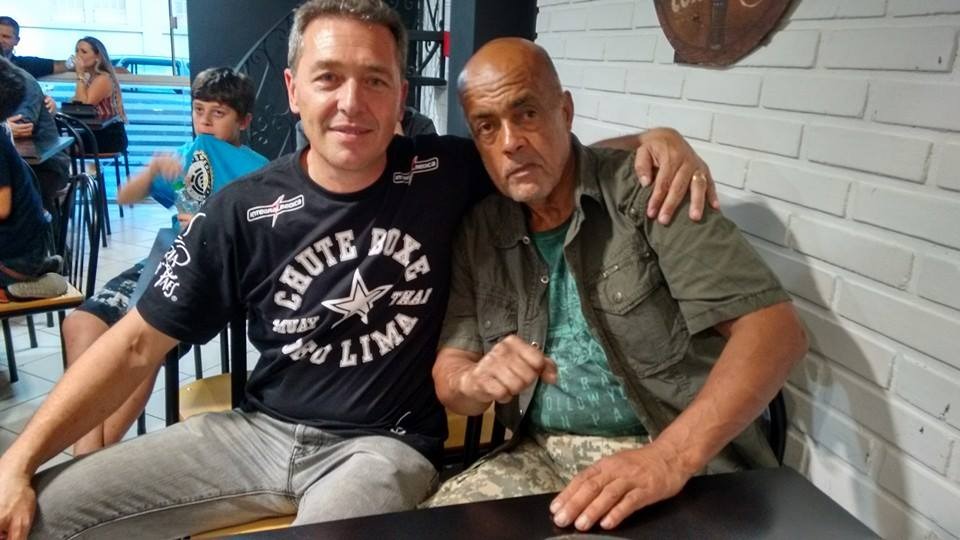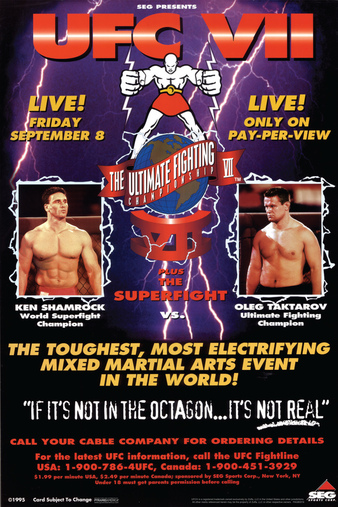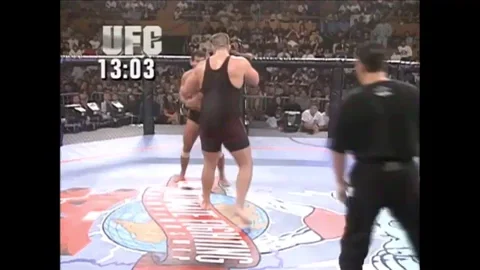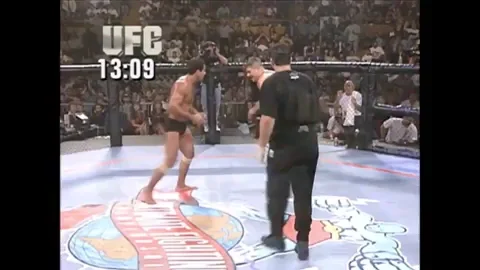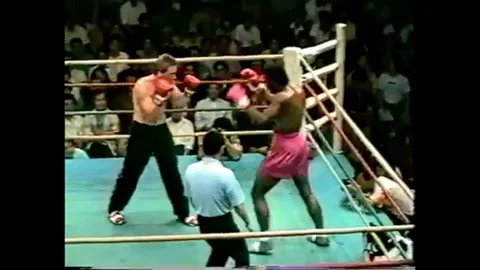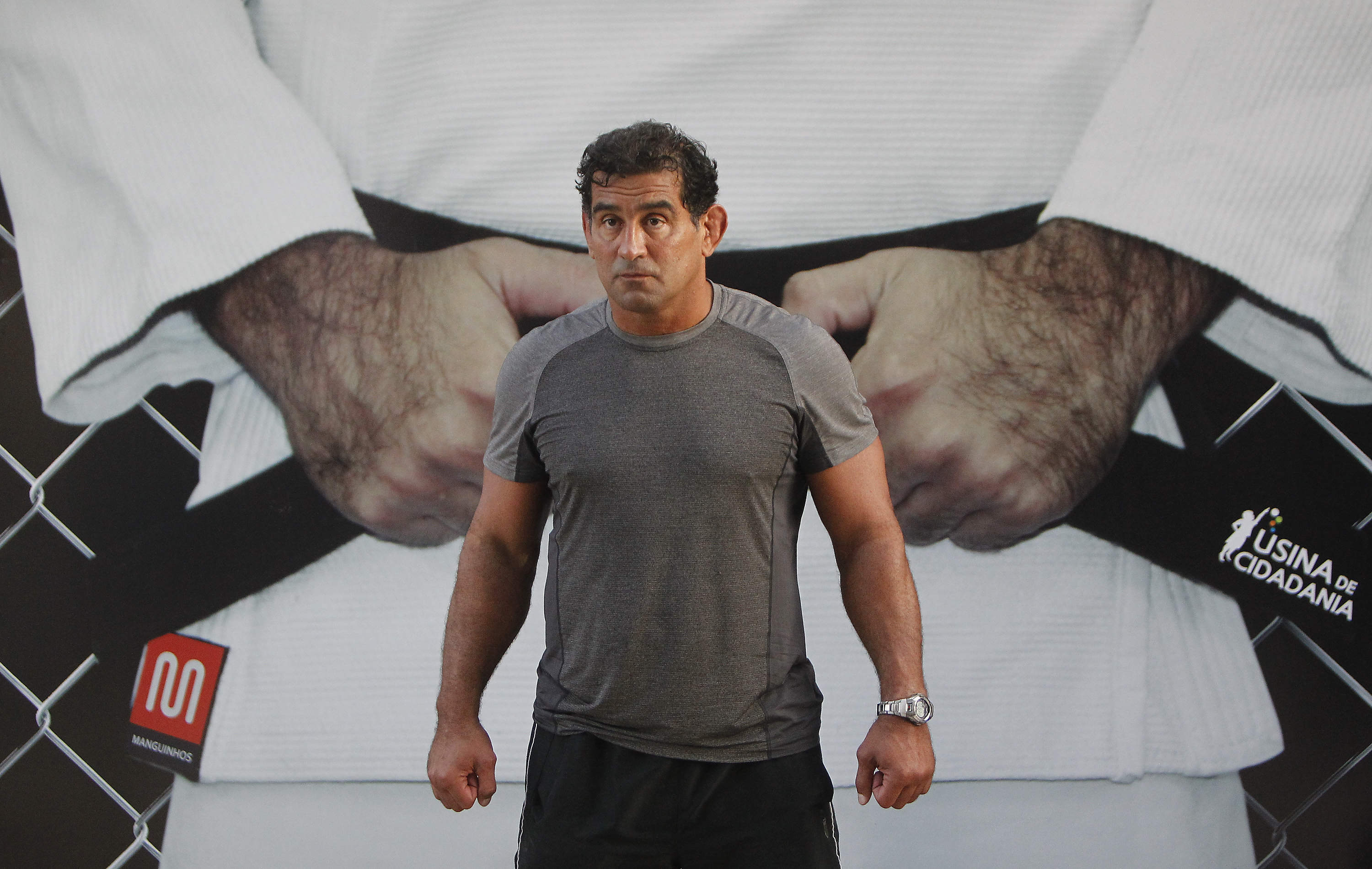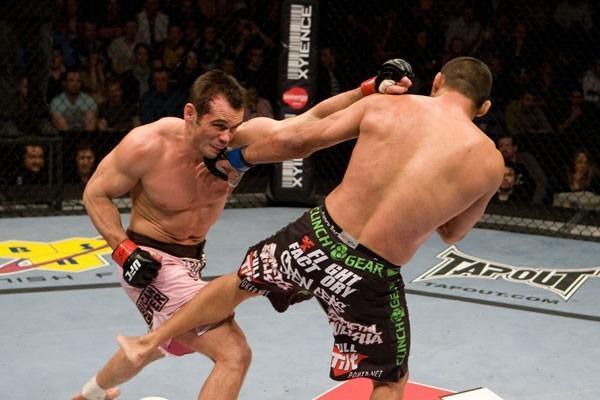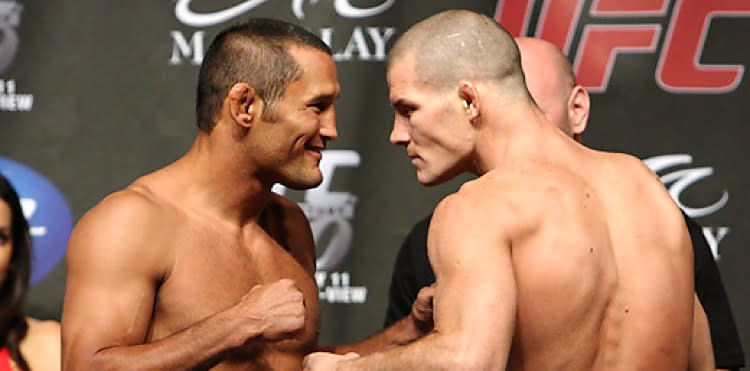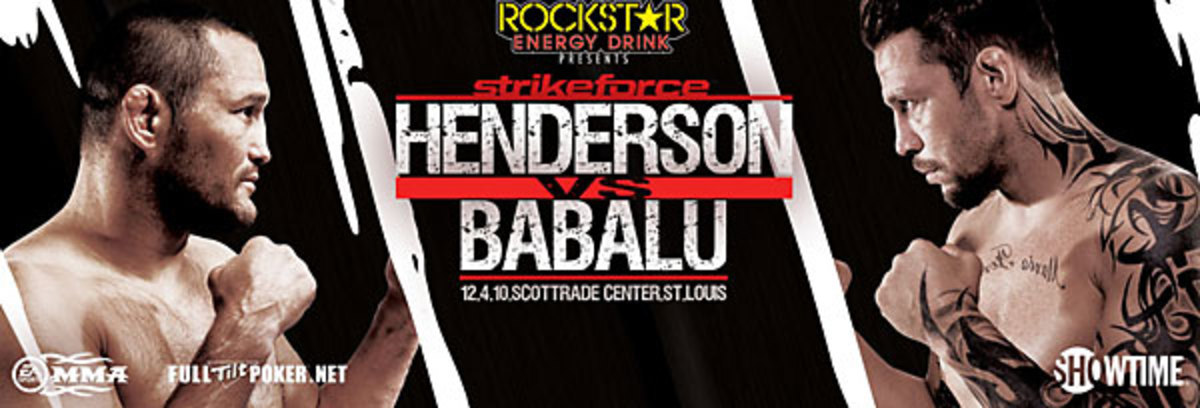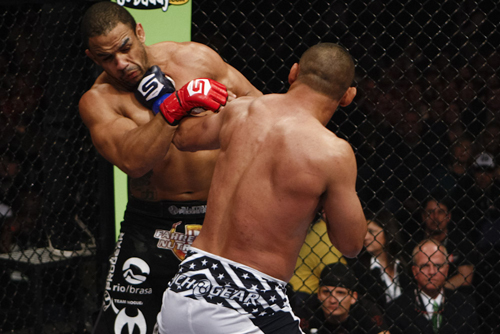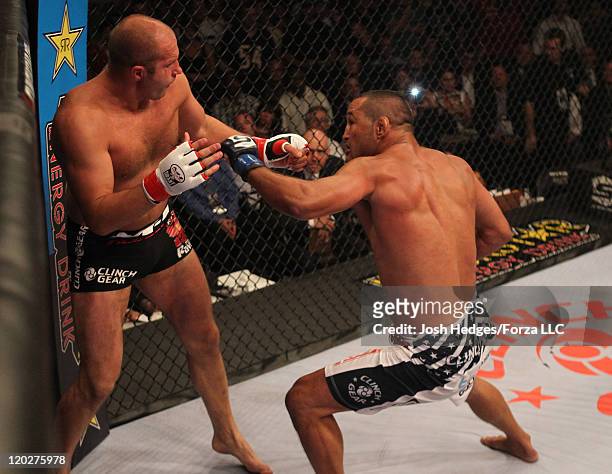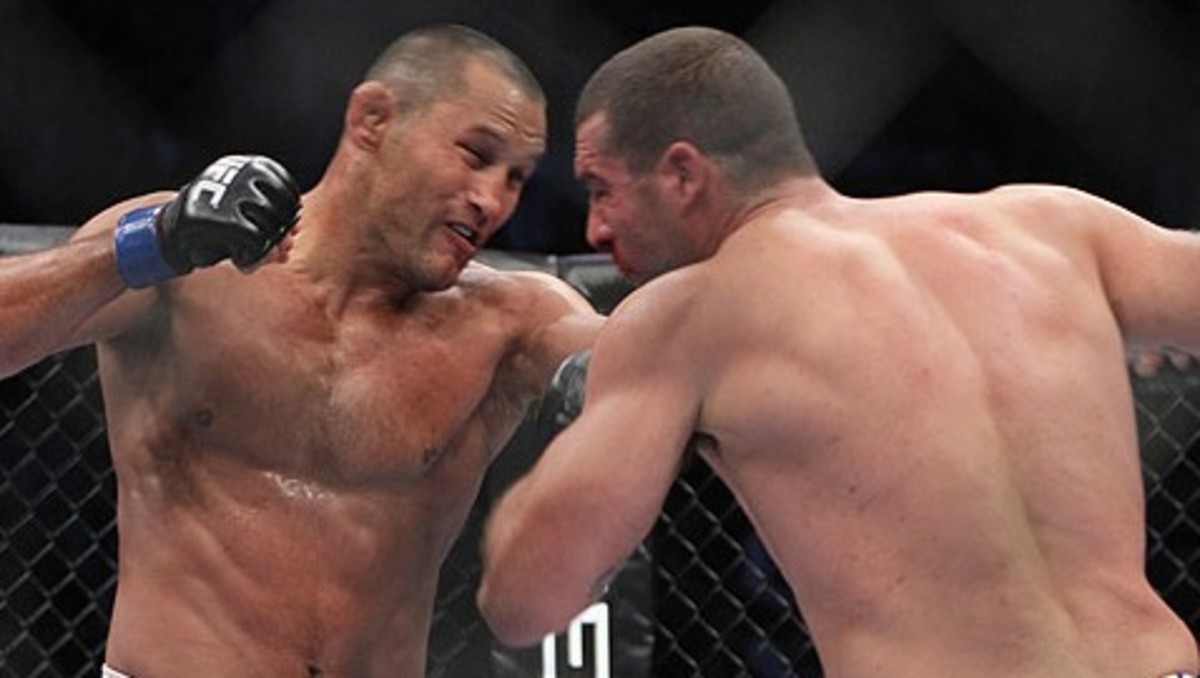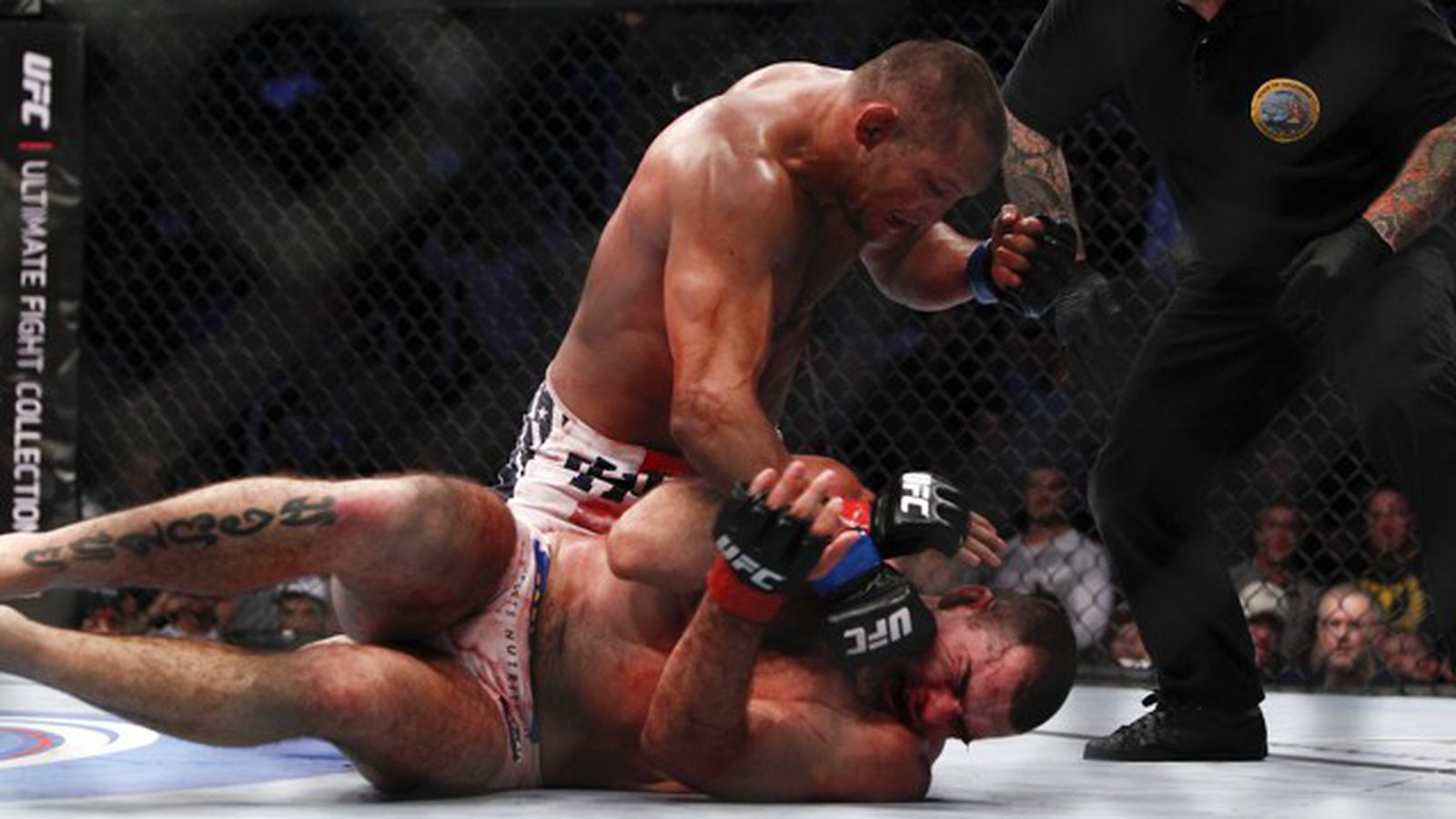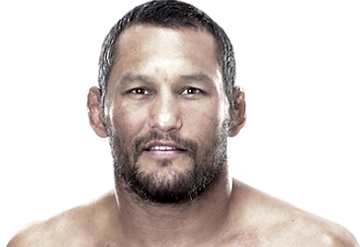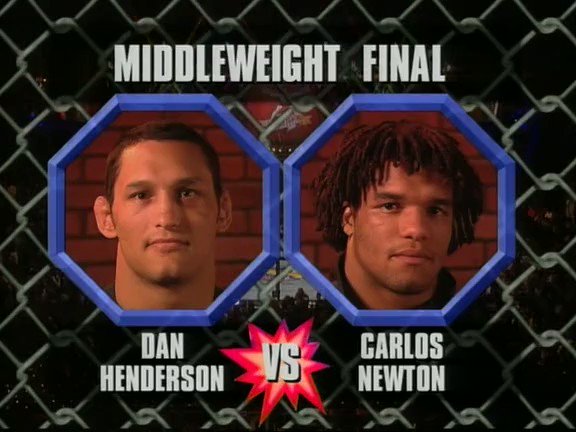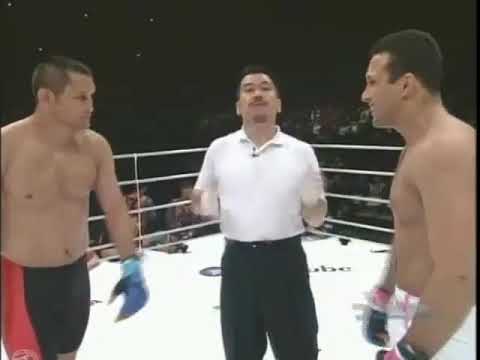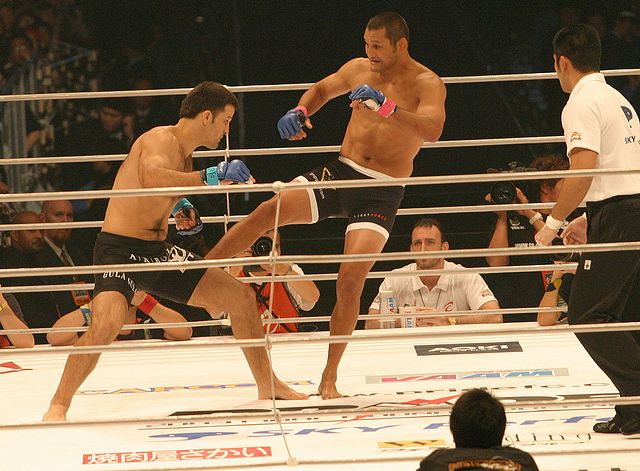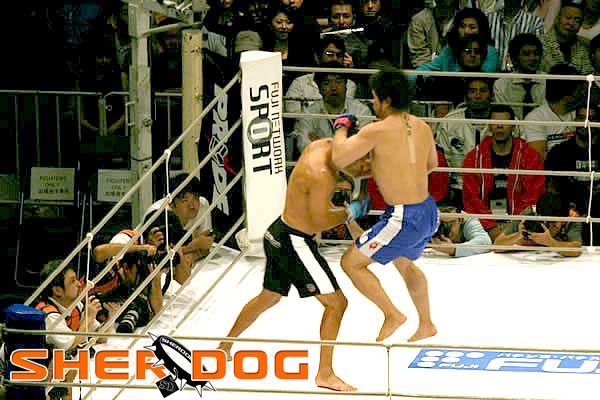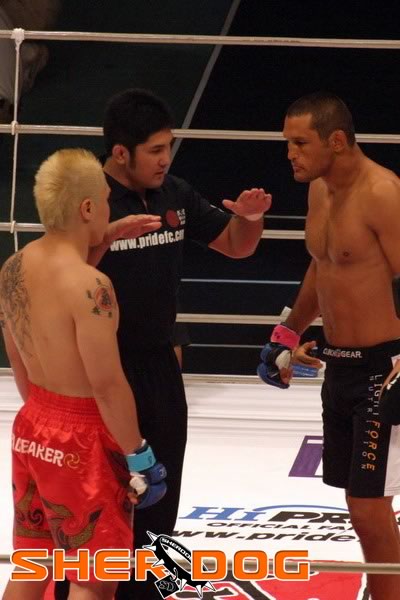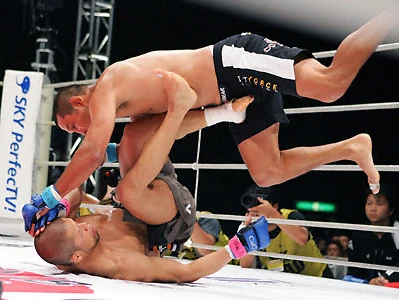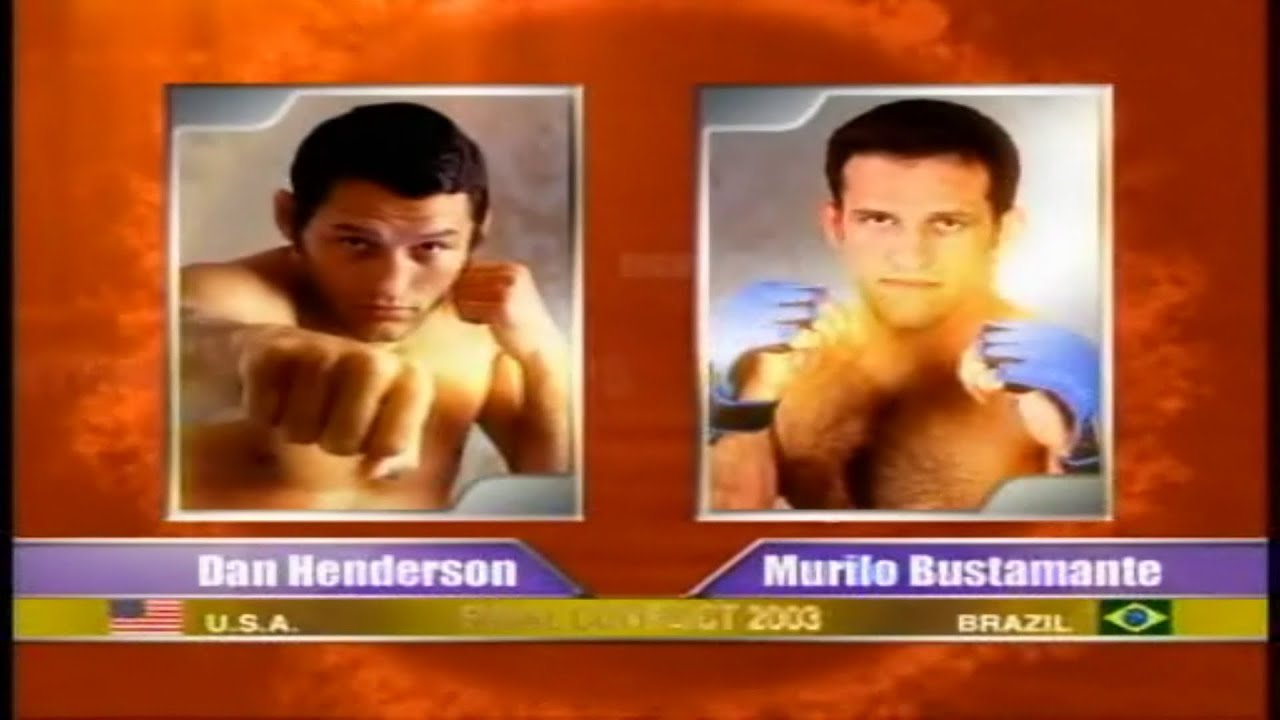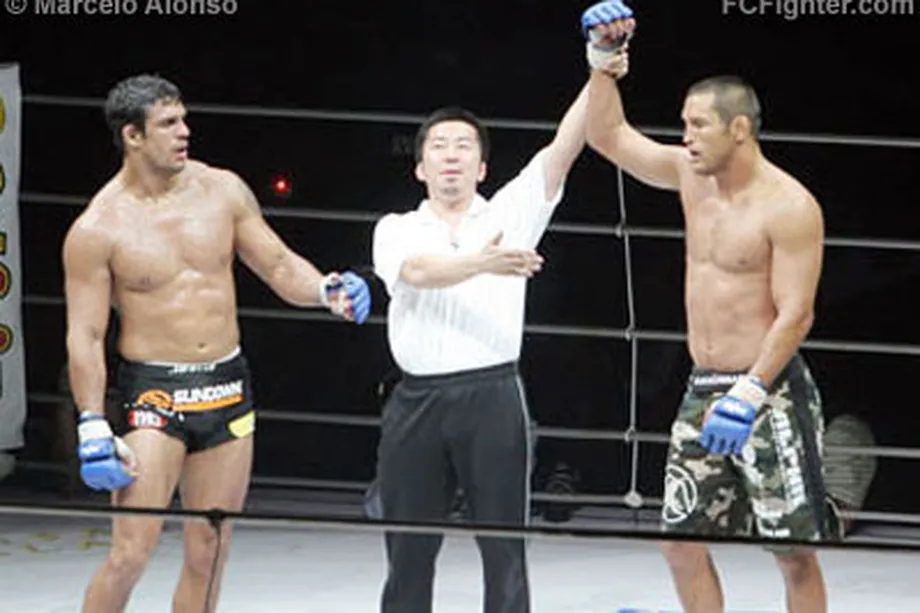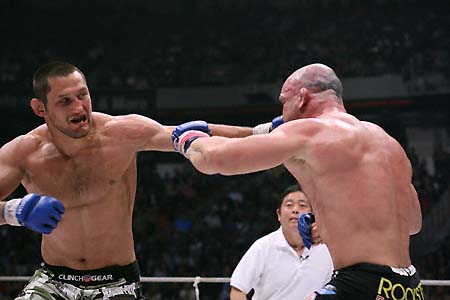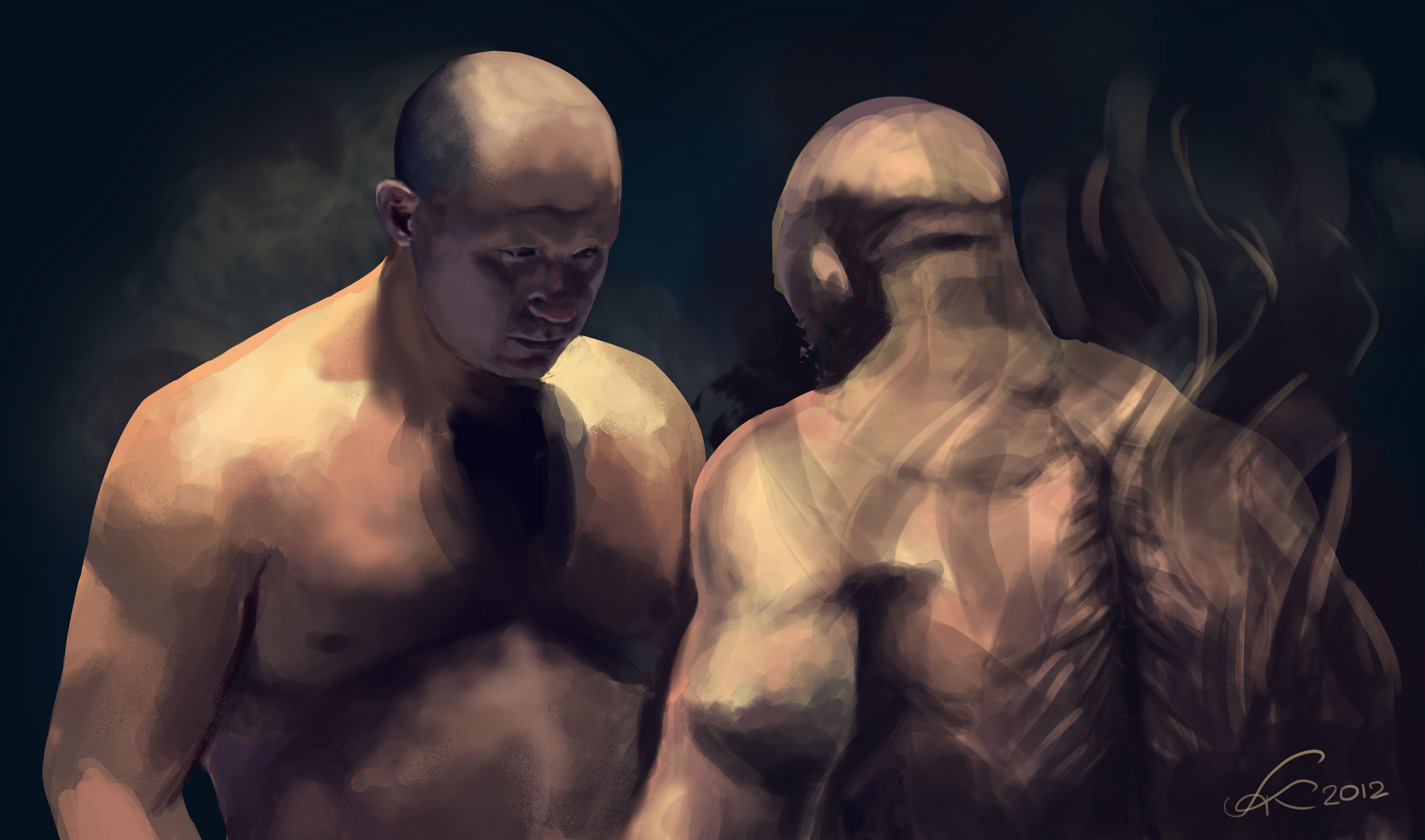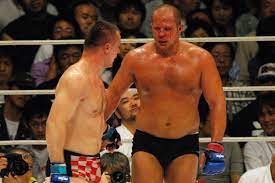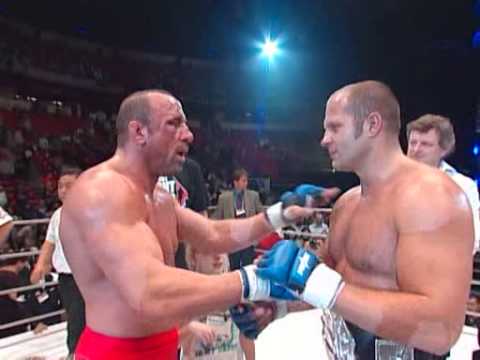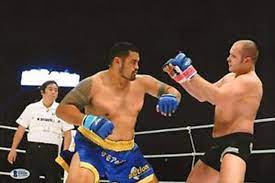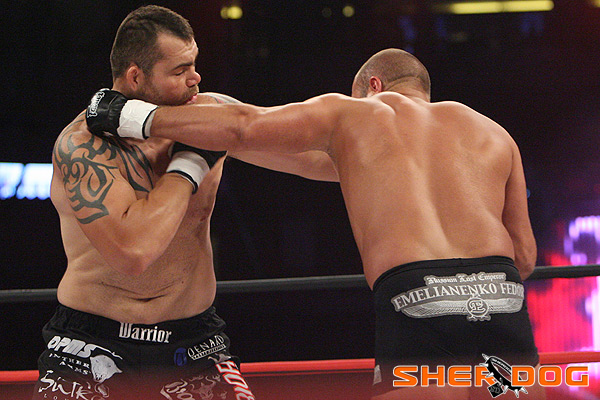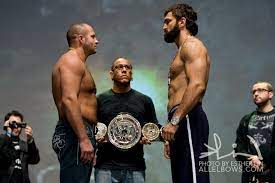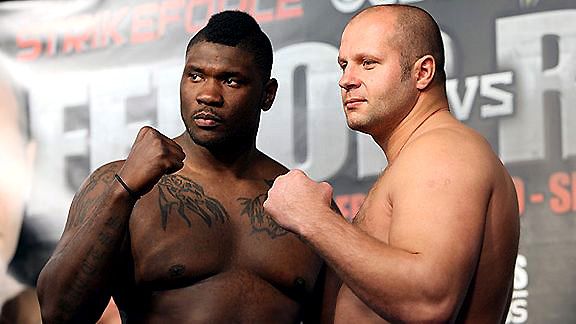“Victor Belfort”
Live on Pay-Per-View television on February 7, 1997, you could see a hulking Brazilian fighter crash through your screen and step into the UFC cage. Referred to as “Victor Belfort” multiple times on the UFC broadcast and previously known as “Vitor Gracie” because of his association with the Gracie family, the man named Vitor Belfort is set to make his big screen debut. After beating Tra Telligman in the first round of the UFC 12 Heavyweight tournament, Belfort won the tournament championship by defeating Scott Ferrozzo in the final round. “Defeating” is one way of putting it, “decimating” is more fitting. Ferrozzo walked into two straight left hands like an undead soldier marching across enemy lines, then was dropped by one of them, and finished in less than 60 seconds of fighting. Although the legend of Vitor Belfort was born before he ever stepped into a cage or ring, it truly began on this night. A Carlson Gracie black belt and a bronze medalist in ADCC 2001, he was feared because of his Jiu-Jitsu prowess when he started fighting. However, once he won the UFC 12 tournament, he became feared for his striking. From this point on his striking would continue to evolve, and would be his preferred strategy moving forward. He used his Brazilian Jiu-Jitsu to become a great stand up fighter – a fighter with the ability to be aggressive and look to hurt his opponent, without fear of being taken down. Belfort is one of my all time favorite fighters, and along with BJ Penn, sparked my interest in MMA and got me excited for what was possible in combat. The pure blistering speed and explosiveness of his punches and kicks are something that to this day, in my opinion, have never been surpassed.
Scoring the Best Resume
In case you haven’t read my other works in the “Uncrowned King” series, I have created a simple point-based system to help determine the highest ranked fighter. This particular system is flawed yet effective – it assigns points to each of a fighter’s ranked wins. In theory, the more points they have, the better their overall resume. To understand the framework, have a look at this article.
The Basics
Organizations: UFC, PRIDE, Strikeforce, Cage Rage, Affliction
Weight Class(es): Welterweight, Middleweight, Light Heavyweight, Heavyweight
Years Active: 1996-2018
MMA Record: 26-14 (1)
Win Percentage: 63%
Finishing Rate: 81%
Best Wins: Randy Couture, Wanderlei Silva, Dan Henderson (x2), Rich Franklin, Matt Lindland, Luke Rockhold, Michael Bisping
The Uncrowned Phenom
Vitor Belfort has been a tale of two fighters since early in his MMA career. He exploded onto the scene in 1996, finishing his first 4 fights in less than 5 minutes. He was already being talked about as a future great during the broadcast for his UFC debut, but had yet to face anyone who was capable of exposing any weaknesses he may have. Belfort would make that “future great” prediction come true, but not exactly how the fighting world of the mid-1990s thought he would. While we know he won the UFC 12 Heavyweight tournament in 1997, another burgeoning heavyweight was making his UFC debut a few months later. Randy Couture (who, believe it or not, made his pro debut AFTER Belfort, at the tender age of 33) was debuting in the UFC 13 Heavyweight tournament, and beat both Tony Halme and Steven Graham to win the championship. This put Randy and Vitor on a path to meet each other, which is a path that will repeat itself throughout their careers. Since this is how the UFC churned out contenders in the early days, the two fighters faced off, the fight being dubbed as a title eliminator. This fight took place at UFC 15 and you have to remember that this is still 1997. It was a time when gloves had just become mandatory, and rounds still weren’t even a thing yet. New rules included no groin strikes, no strikes to the back of the head, no fish hooking, no head-butting, and no small joint manipulation. Given Belfort’s first 4 fights, he was the favorite going in, Couture being the underdog and perhaps to some, the sheep getting thrown to the wolf. This perception would play out the opposite way, with Couture largely dominating Belfort, taking him down and stopping him by punching him in the head until the referee stepped in. This fight is important in the history of Vitor Belfort’s career, as it became a watershed moment that stripped Belfort of his perceived wolf’s clothing. And the blueprint was born: withstand Vitor’s onslaught for the first few minutes of the fight, put pressure on him, and break him. This would become a recurring theme for the duration of Belfort’s career, one that he improved over time, but never fully outgrew. Thus the legend and simultaneous curse began, with multiple iterations of Vitor Belfort walking into the cage over the years. With that being said, he fought a lot of the best fighters at middleweight and light heavyweight during his era. Although he was briefly the UFC Light Heavyweight Champion after defeating Randy Couture in January of 2004, this result was marred with controversy, then Couture took the belt back 7 months later, and Belfort was never seen as a true champion. Herein lies the concept of “uncrowned king”, a fighter who had a lot of great wins over a lot of top guys, but never quite proved themselves as the best in their respective division. As a big fan of Vitor Belfort since 2007, I can say I’ve felt that on multiple occasions. In my time as a fan of his, he lost in his attempts to recapture gold against Anderson Silva, Chris Weidman, and Jon Jones. However, while it’s easy for me to sit in my dining room and type this, there’s no overlooking the fact that when Belfort lost, he only lost to the cream of the crop. His losses to Sakuraba, Couture, Overeem and Tito all emphasized his weakness, yet highlighted the elite skills of his opponents.
Punches To The Face

This brings us to Belfort’s first ranked win. Wanderlei Silva was a rising Brazilian fighter from Curitiba, who had a couple of decent wins, but aside from a single loss, his first few fights looked a lot like Belfort’s, but with Silva dealing out the punishment instead.
Event: UFC 17.5 (UFC Japan) | October 16, 1998
Record Before Fight: 5-1
Opponent: Wanderlei Silva
Opponent’s Ranking: 6 (Middleweight – 199 lbs)
Result: Win // KO (Punches)
Score: 4 points
When you initially watch this fight, you’re going to see Wanderlei Silva throwing a punch, Belfort countering, which then led to the knockout. The problem is everything happens so fast, that you have to slow it down to see what is actually going on. After a little feeling out, Wandy steps into range, looking to land something of his own. Belfort anticipates this attack and before Silva throws even a single strike, Belfort is hitting him in the face and chasing him across the octagon. A left straight starts the flurry, as Belfort follows him, he continues throwing alternating left and right hands until Silva hits the cage, when Belfort is finally able to finish him off with a left uppercut. By my count, Belfort landed 8 of 15 punches, and never gave Silva a chance to respond. An interesting tidbit about this fight is that Belfort wore boxing shoes (which he did in every fight in his early days), which means he was not allowed to kick. It’s unclear if he thought the shoes would give him more grip, or if he had another reason. He also takes more of a conventional boxing stance here, which ends up being an early version of the stance he would use throughout his career. Vitor Belfort gets the KO in 44 seconds, and gives us one of the best knockouts the sport has ever seen. Don’t blink.

Event: PRIDE 9: New Blood | June 4, 2000
Record Before Fight: 6-2
Opponent: Gilbert Yvel
Opponent’s Ranking: 7 (Heavyweight)
Result: Win // Unanimous Decision
Score: 3 points
Vitor Belfort wants us to know he’s a human person. After losing to Kazushi Sakuraba in an effort that displayed Belfort spending a lot of time on his back, he wanted a more complete training, and moved to Brazilian Top Team. A big story at this time was Belfort’s move away from Carlson Gracie, as he had been a huge figure in Belfort’s life since he was a teenager. The move to BTT paid off, and in the first 10 seconds of this fight, we get an aerial view of Vitor landing a straight left, and a combination of Yvel getting dropped, and being off balance. This leads to a Belfort takedown, and gave him top control that would last the entire round. He constantly attacked with punches to the body and head in the first round, at one point hitting Yvel so hard that his head left the confines of the ring. Vitor put on the performance of a true wrestler, even using tactics like covering Yvel’s mouth with his hands. Bizarrely, at no point did Belfort operate with any sense of urgency on the ground, or look for a submission, which is what you would expect from a black belt. Throughout the fight there were multiple standups, even one that was openly protested by Vitor late in the second round. It’s hilarious to me that Yvel “fake” punched Vitor from his back as Vitor was protesting and being stood up, and Belfort was too upset to even notice, simply putting his head down as they stood up. The standup itself wasn’t surprising, as Belfort was keeping somewhat busy with punches, but not nearly enough to make it an entertaining fight. Because of his commitment to holding Gilbert down, it made for a pretty uneventful night, not really showcasing the striking skills of the Dutch kickboxer Yvel vs. the Brazilian “boxer” Belfort. Vitor did most of his work from open guard, occasionally gaining a half, but never making an attempt to pass from there. It was an uncharacteristic performance from him in the sense that the aggression and killer instinct that we’ve gotten used to was absent, and if anything Vitor Belfort showed an improvement in his wrestling and control, which moved him away from relying on boxing, and rounded out his game a bit more. Nothing extraordinary happened, but it was a solid win over a good heavyweight fighter that showed us an evolution of his game, and his maturity.

Event: UFC 46 | January 31, 2004
Record Before Fight: 11-3
Opponent: Randy Couture
Opponent’s Ranking: 1 (Light Heavyweight Champion)
Result: Win // Doctor Stoppage
Score: 6 points
A lot happened between the time Vitor Belfort beat Gilbert Yvel in PRIDE, and the time he entered the cage against Randy Couture. The Yvel fight came right after Vitor lost to Sakuraba at PRIDE 5, in a fight where Kazushi controlled and damaged Vitor on the ground with a variety of kicks, stomps and punches. Sakuraba wasn’t expected to be able to strike with Belfort, yet he proved superiority later in the fight, even dropping Belfort with a spinning back kick. Most of the success Vitor had in that fight was in the beginning, like most of his other fights. It was particularly bad for Vitor, who at multiple points even dropped to his back to get Saku to jump onto the ground with him. It was what happened on this night that convinced Belfort to move to a different training academy. Since that fight he went 5-1 (including the win over Yvel), with the only loss being to future UFC Champion Chuck Liddell. By the end of his PRIDE run he had beaten Yvel, Dajiro Matsui, Bobby Southworth and Heath Herring, and by the time he fought Couture at UFC 46, his striking looked much improved, as he was very competitive in a striking bout with Liddell, and stopped Marvin Eastman with one of the most horrific cuts ever seen in the sport, developing from a series of knees Belfort landed in the clinch.
Before this, fights against Matsui, Yvel, Southworth and Herring (all in PRIDE) turned into all but wrestling matches, with Vitor nearly completely abandoning all of his striking, with the exception of an occasional left straight. Vitor Belfort’s wrestling had seemingly caught up with his boxing, and his boxing was in the beginning stages of being a complete striking game, throwing his first low kick against Liddell and showing us knees for the first time against Eastman. Although Belfort had lost to Chuck, it didn’t lower his stock, and in fact may have raised it by virtue of his endurance holding up as good as it ever had. Despite Couture’s sheer dominance in their first fight, he would end up being a small underdog, with a lot of people feeling like Belfort’s improved wrestling and experience would make it a much harder fight than the last time. Some of that also had to do with Randy’s age, as he was 40 at the time the fight took place. Well, it was a much harder fight for Randy, but not in the way that you’d think. You’d have to ask him to know for sure, but I’d say the challenge ended up being more mental than physical. Less than 20 seconds into the fight, Belfort gets the clinch, and Randy is noticeably wincing as he stands against the cage. John McCarthy stops the fight to see what’s wrong, the cageside physician looks at Couture’s eye, and decides he can’t continue. It turns out that the only punch Belfort threw didn’t land at all, but rather grazed Couture’s eye with the stitching on the glove of Belfort. That leaves the only strike landed in the 49 second contest being a low kick by Randy in the opening seconds. Typically I would award 8 points to a fighter for finishing a world champion, but in this case I’m only giving out 6. Now if it was a punch that landed and caused a cut, which then forced the doctor to stop it, this would be a finish to me. But since this came from eye damage caused by a glove on a punch that didn’t even land, I don’t consider it to be a “stoppage”. Well, there we have it. It isn’t what anyone wanted, but Vitor Belfort is the undisputed Light Heavyweight Champion.
A Hole
Vitor Belfort’s fight against Matt Lindland in January of 2009 came an entire FIVE YEARS removed from his world championship win over Randy Couture, and he was coming into the fight on a 3 fight win streak. Before we talk about Belfort versus Lindland, let’s go back in time, to right before Vitor won his world championship over Randy Couture in January of 2004. To be more specific, on January 9th 2004, Vitor’s sister, Priscila Belfort, was reported missing. At the time, his family had no information on her whereabouts, and no leads on what happened to her. If you’re keeping track, Vitor’s fight against Randy took place on January 31st, just four weeks after this happened. I know that win isn’t considered credible by almost all MMA fans (including myself), and that’s a legitimate stance. But fighting for a world title less than a month after your own sister disappeared off the face of the earth is no easy task and quite frankly, pretty fucking nuts. At the very least you would think Vitor would be questioning his motivation to fight, his will to train, and not to mention the pressure to find his sister and be there for his family. The fact that Belfort committed and gave everything to his family while still going through with this fight…tells you all you need to know about his mental strength. As of writing this article she has not been found, although in 2007, a woman “confessed” that she kidnapped and murdered Priscila. She and alleged accomplices were arrested, but Priscila was never discovered. Her family believes her to be alive somewhere. Now you get the post-fight celebration, right? There’s more than one kind of fight. If you’re interested in hearing the full story, there are multiple in-depth documentaries on the subject.

Event: Affliction: Day Of Reckoning | January 24, 2009
Record Before Fight: 17-8
Opponent: Matt Lindland
Opponent’s Ranking: 7 (Middleweight)
Result: Win // KO (Punches)
Score: 4 points
Now that we know what was going on with Vitor in 2004, his career for the next few years is put into perspective. Between August of 2004 and April of 2007 he went 3-5, with his wins being over Antony Rea, Kazuo Takahashi, and Ivan Serati. In late 2007 we see a more focused and improved Vitor Belfort, after his family received news of what may have happened to his sister, Priscila. After this news, Vitor rattles off a couple of wins, one of them over James Zikic in Cage Rage (winning himself a world title), and makes the move to Xtreme Couture in Las Vegas. This turned out to be a great decision for him, as his striking would continue to evolve under the tutelage of Ray Sefo and Shawn Tompkins. This hard work and commitment to furthering his skills paid off, and the first fight he had working under Xtreme Couture was against Terry Martin. There would be no need to question that decision, as he dominated Martin en route to a nasty knockout in the second round. Martin thinks a jab is coming and Belfort comes underneath with a lead uppercut, finishing the combination with a left straight that puts him out. I know I haven’t gotten to the Matt Lindland fight, and I’m supposed to by now, but you can see I have good reasons for typing all of this shit. The Martin fight was Belfort’s debut at middleweight, which would be his home for the next several years, and a home he enjoyed a lot of success in. Believe it or not, when the Lindland fight finally took place, Belfort was a slight underdog. A lot of people thought Vitor’s best chance was in the opening minutes, and if he did not stop Lindland early, he would spend the rest of the night getting beat up in the clinch or on the ground. I think a lot of fans saw this as a sort of Vitor vs. Couture 4, and even with Vitor’s recent resurgence as an improved fighter, still clung to the notion that Belfort was a great hammer but an inadequate nail. Matt Lindland was Vitor’s elder by several years, but aside from Lindland’s losses to Rampage Jackson and Fedor, he had been on quite the run over the last 5 years. Belfort’s head coach Shawn Tompkins (RIP) wanted Vitor to be aggressive, and look for the knockout. And boy did he ever, proving both his critics and his coaches right simultaneously. The way he did that was by knocking Matt Lindland out cold, giving us one of the most barbaric knockouts we’ve ever seen in MMA, to this day. Outside of a low kick to open the fight, all Vitor landed was a jab (slightly) a straight left, and four follow up shots on the ground, the last of which put Lindland out completely for almost three minutes. This scene stunned onlookers (myself included), as Matt laid on the ground not moving, for what seemed like hours. He finally woke up, had a neck brace put on him, and was taken out on a stretcher. I believe that was the day Vitor Belfort put all of middleweight on notice, especially in the UFC and Strikeforce. Since I skipped ahead and talked about different timelines without discussing every single fight and it’s place in time, I’ll provide you with a bit of context here.

Back For The First Time
As you can see, Vitor’s worst run so far has been from 2004 to 2007, the few years following his sister’s disappearance. Vitor Belfort made his MMA debut in 1996 as a Jiu Jitsu fighter with power in his hands and bar room brawling tactics. By 2009, he was a well-rounded, technical fighter who played to his strengths and could follow a gameplan well. His move to 185 and Xtreme Couture were clearly great decisions and while they stimulated the growth of his physical skill set, more importantly contributed to a period of psychological advancement, where his experience and wisdom, as well as his ability to overcome obstacles professionally and personally, led to a greater sense of confidence, and composure under fire. In the Lindland fight we get our first reincarnation of Vitor Belfort, Vitor 2.0, or as I like to say, he was “back for the first time”. Belfort is a different fighter, and he wants us to know it. We’ve covered his first 12 years of ranked wins and next, I’ll cover the following six.











